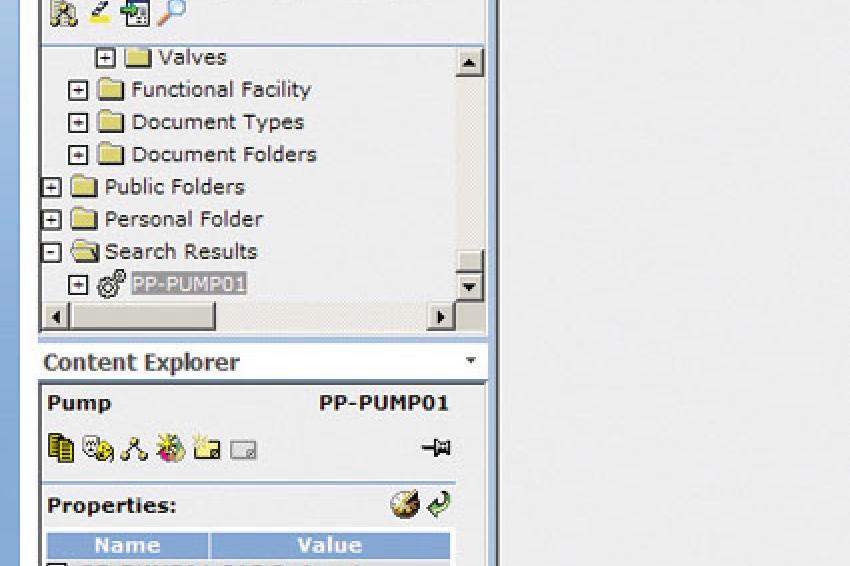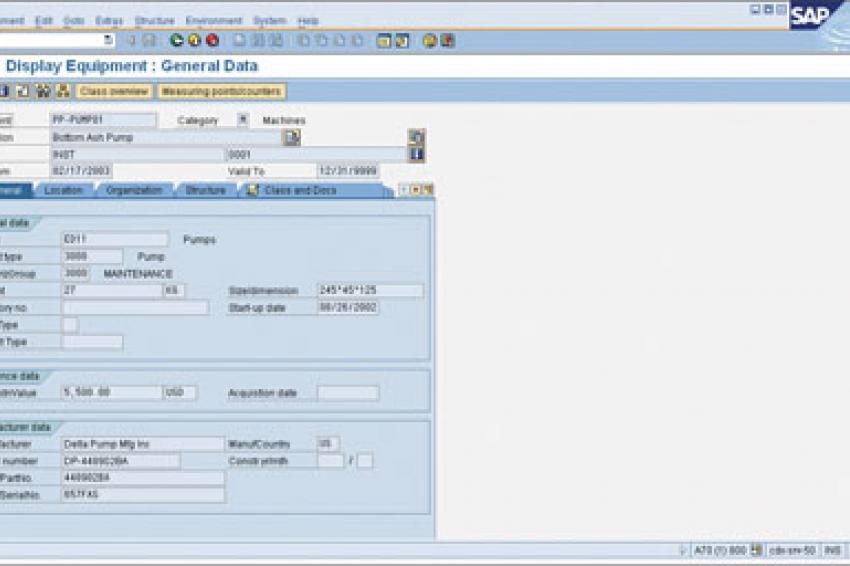Enterprise Resource Planning
A Vital Link Between Maintenance and Asset Management
Exchanging Data - ERP (Enterprise Resource Planning) systems are often a key technology in the operations and maintenance functions of the process plant industry. They include multiple applications, covering disciplines as diverse as supply chain management (e.g. purchasing, manufacturing and distribution), financials, human resources, decision support, and so on. But at some point, the ERP system has to be able to exchange data with the asset management system.
Consider, for example, the work process for maintaining a pump. The information associated with the pump itself is, of course, largely technical, but the information about, for example, who is qualified to change that particular pump, and what the rest of their workload looks like on that day, can only come from a combination of other applications within the ERP system. Some operational and maintenance processes are actually very reliant on business data, and the reverse is also true, so there has to be an effective link between them.
How It Should Work
Here is an example of how this process should work in practice in order to increase productivity and reduce project costs. The operations supervisor notes, from the shift handover report, that there is a leaking pump, tag reference PP-PUMP01, in the sour water unit. He creates a work order to notify the maintenance department. The maintenance planner receives that work order and recalls similar problems with this pump. Because he has an effective link into the plant's asset management system, he can search for the pump by name and can quickly display all the information related to it.
The maintenance planner sees that this pump has been mentioned in a total of four shift handover logs and that each time it was due to a leaking seal. He can then use the link into the asset management system to create a new change request asking the plant engineering group to further investigate this situation.
The engineering group receives notification of the change request and searches the asset management system for the pump specification sheet. The engineers determine that the pump seal material is not optimum for sour water service and that it should be replaced with one of a different material. Changing the seal specification is a "not in kind" change so, through the system, the change request must be documented as a true management of change (MOC) record and submitted to the MOC coordinator. Once the MOC is approved, the coordinator issues the change request back to the maintenance planner, the seal information is updated, and a work order is issued to a technician.
Naturally, there are challenges in achieving such a smooth interconnected process. First, the many different data formats involved mean that the component systems are often not able to fully exchange information. Second, information is often fragmented; held in many disparate,
unconnected systems - so-called "silos" of information - so it's difficult to get at and to share, and applying consistent updates across all the sources of data becomes a problem.
Yet effective integration between applications is achievable. Two things are necessary, however. First, a "digital information hub" that is data-neutral and so enables information of any kind to be shared and used, without needing access to the original authoring applications. Second, an ERP system that connects fully to this environment, enabling data to flow in both directions.
The Digital Information Hub In Action
As described, the existence of many different types of data, originating from many different applications and stored in many different silos, is a fundamental challenge for any operational or maintenance information system. The huge potential benefits offered by access to ERP data cannot be fully realized if there is no integration with the other sources of information already in place.
Yet the data-agnostic, ISO 15926-compliant digital information hub is not an ideal - it is a reality and already in use in many businesses worldwide. Equally real are its inbuilt ability to collect, maintain and share consistent equipment registers, enabling timely and well-informed decision making and the reduction of unplanned downtime and outages.
Business consultants Deloitte recently published a post-implementation review on the successes achieved by Woodside Energy in Australia, who deployed such an integrated solution as part of their ALIS (Asset Lifecycle Information System) program. Among other benefits, Woodside was found to have achieved productivity gains of 10%-20%, has reduced its training costs by some 97%, and has experienced cumulative benefits of over AUD $20 million. Woodside's experience is unique only in having been independently verified; similar benefits have been achieved by many other companies, including Shell in Nanhai. The Deloitte review is publicly available and can be downloaded from www.aveva.com/whitepapers.
Integrations between ERP data and operational/maintenance systems, using a digital information hub as the glue that binds all of the information sources together, are readily achievable using proven technology and are delivering measurable business performance gains in operations and maintenance environments. When will your business experience the benefits?






